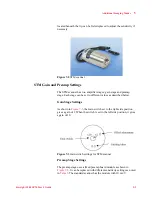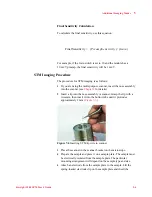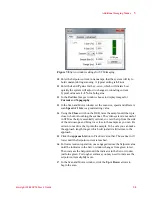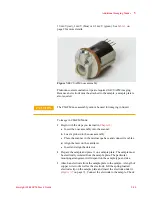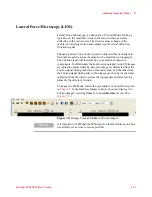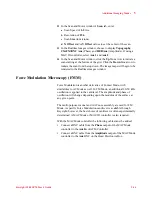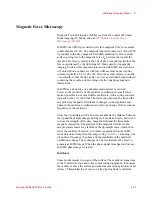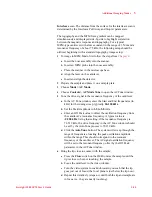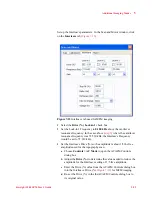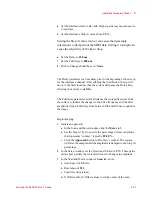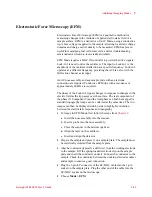
Additional Imaging Modes
5
Keysight 5500 SPM User’s Guide
5-14
Dynamic Lateral Force Microscopy (DLFM)
In Dynamic Lateral Force Microscopy (DLFM), a lead zirconate titanate
(PZT) ceramic element in the nose cone oscillates the tip parallel to the
sample surface, in the direction of the scan (as opposed to perpendicular
oscillation as in AC Mode). Cantilever deflection is mapped to give
topography, as in contact mode. Changes in the amplitude and phase of
the lateral oscillation are imaged. DLFM is very sensitive to changes in
surface properties such as friction and adhesion, and as such it is
particularly useful for polymer studies.
DLFM requires a DLFM nose assembly and any sample plate. Force
Modulation cantilevers are recommended, with a resonance frequency
in the 70-80 kHz range. Some experimentation with stiffer or softer
probes may be required to achieve satisfactory imaging. A MAC Mode
or MAC III controller is also required to drive the lateral oscillation.
With the MAC Mode controller the following cables must be added:
•
Connect a BNC cable from the
Phase
output of the MAC Mode
controller to the
Aux In
of AFM Controller.
•
Connect a BNC cable from the
Amplitude
output of the MAC Mode
controller to the
Aux
BNC on the Head Electronics Box.
For the MAC III controller these connections are made in software.
To image in DLFM Mode:
1
Begin with the steps you learned in
a
Insert the nose assembly into the scanner.
b
Load a probe into the nose assembly.
c
Place the scanner in the microscope base and connect its cables.
d
Align the laser on the cantilever.
e
Insert and align the detector.
2
In PicoView choose
Mode > DLFM.
3
Choose
Controls > AC Mode
to open the ACAFM Controls
window.
4
Set the Drive Mechanism to
AAC
.
5
Set the Drive % to
10 %
.
CAUTION
Electrical elements of the DLFM nose assembly are exposed. Therefore,
DLFM should
never
be performed in liquid.




